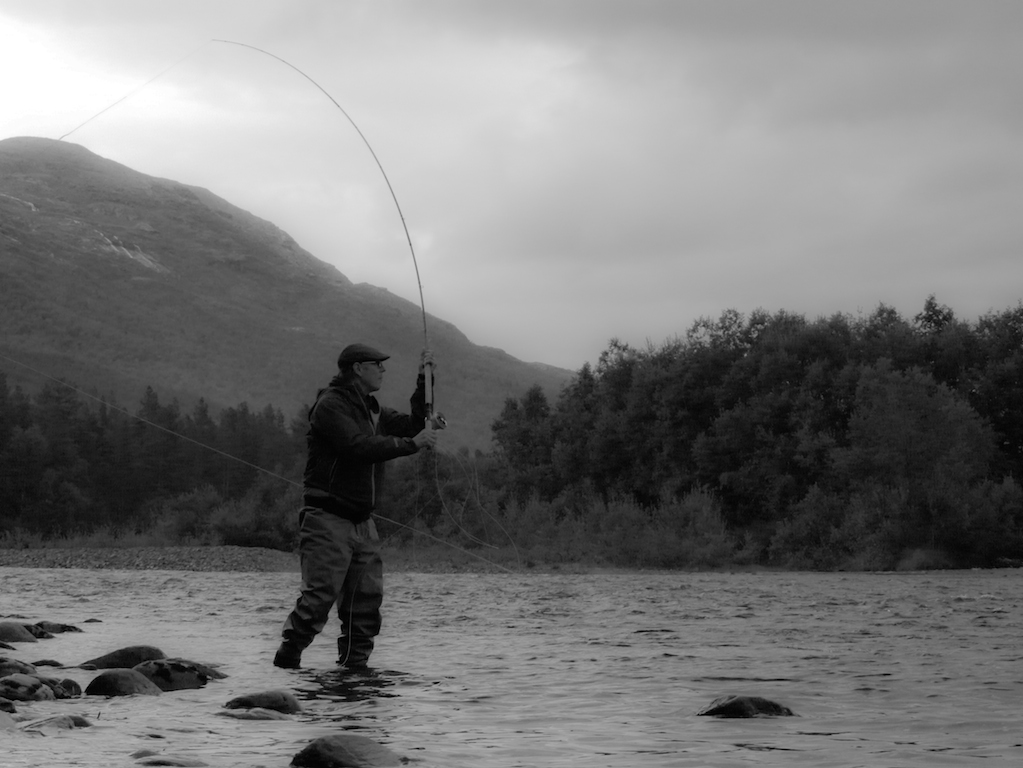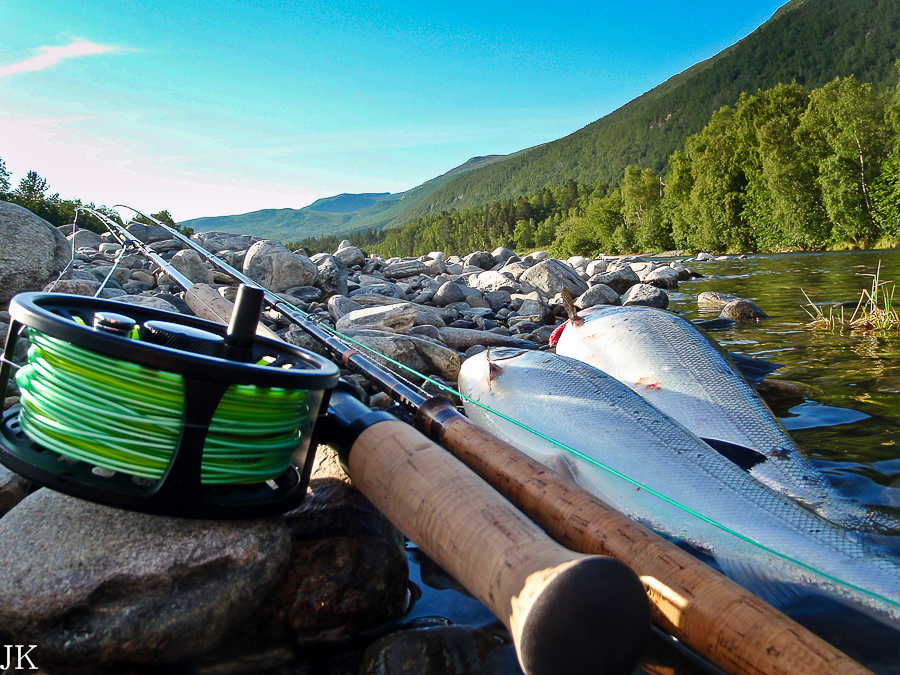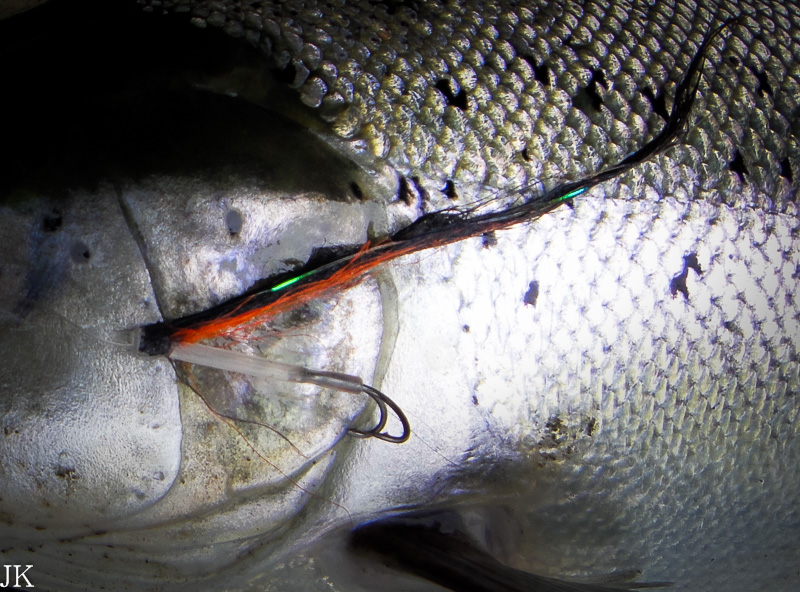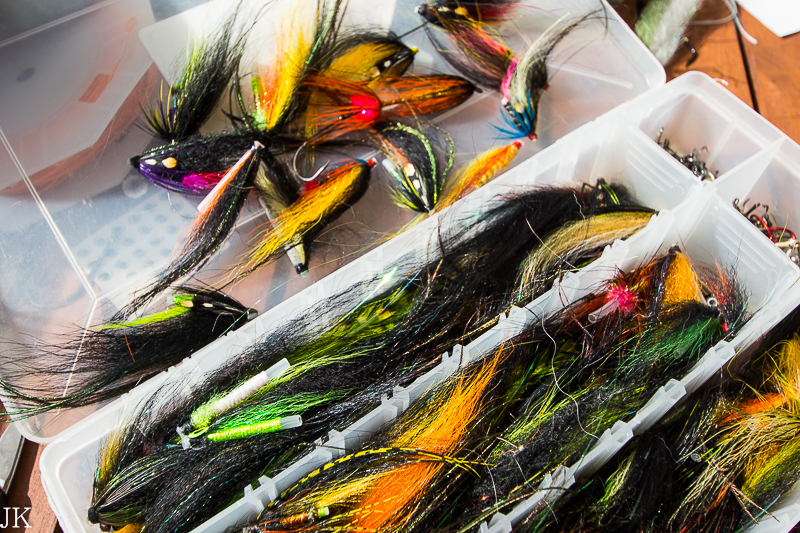
Now that´s a question having as many right answers as there are salmon fishermen.
I’ve been fishing salmon with a fly rod for quite a long time. During the past years I’ve tested hundreds of lines, both factory made and custom made, and from time to time people ask my opinion about which lines I prefer and why? Well, I think these things are never straight forward but with the following words I will share my thoughts about the lines I prefer to use during the salmon season.
The golden rule, that I have followed all these years, is: Choose your line to find a good ”pull” in different pools. When you find the ”pull” you can offer the fly to the salmon with a right angle and right speed. The swing speed. In other words, depth of the pool is not as important as is the strength or speed of the current.

In june, when the rivers are large due to melting snow and when the water is cold, it is good to slow down the speed of the fly. In most of the cases, we look for pools where the current is slow. Spots where those big first running salmons most of the times stay only for a little while. You need to be very lucky to meet them. In early season conditions I prefer to use full sinking lines. Sure, many times a line with a floating belly and a sinking tip is the right choice. Especially when you want to let the fly stay, or hover, at the same position a little longer. But if you want to control the speed of the fly and get it deeper it’s best to go with a full sinking line.
My favourite sinkers are from Triple-D fly line family made by Guideline. These lines are very easy to cast and with them I’m able to offer my fly to a salmon the way I want. In a pools where the current is strong and “thick” I prefer to use I-S2-S4 and S1-S3-S5 heads. I use these heads with my Loomis 15 footer and cut them to about 11,5 meters in length. This length equals to about 40-42 grams in weight. Also, a bit older shooting head family from GuideLine, Power Taper, has a few very good members such as S3-S4 and S5-S6 heads. Pools where I prefer a little more speed I like Triple-D heads such as like H-S1-S3 and F-I-S2. Another very good sinking line is RIO AFS S3-S5. It is very easy to cast and I haven’t cut it at all. It works very well in full length.
Choose your line to find a good ”pull” in different pools
When the water gets warmer during the season, I use mostly a floating belly line with a clear intermediate tip. My absolute favourite F/I shooting head is Vision Ace, the older model more precisely, which is not in the market anymore. The discontinued ACE had a mono core and in my opinion, it is still one of the best fishing lines I’ve used during the “normal” summer conditions. I have discussed with some fly line manufactures about the mono core lines and, as far as I understand, the problem seems to be how to make a line with an good casting features with around monofilament core. Sad… Different kinds of polyleaders are also good alternatives to be used at the very end of the fly line. I was in Norway few weeks ago and used clear intermediate tip line with an intermediate polyleader. I think it was a good combination. Floating belly with a clear long intermediate part is very easy to cast and carries the flies nicely just under the surface.
I hardly ever use a full floater. Well, actually, because I don’t like so much dry fly fishing for salmon, I simply don’t have any use for full floating lines. I use mostly tube flies. I don’t want to weight my flies so using sinking lines with light tube flies, more sensitive to the current, with an longer leader makes me a happy angler. This has been my way to catch those nice chrome coloured Atlantic salmons.

If I look back on this season here’s what I used: two of my rods, both 15 footers, only a few lines, Triple-Ds which I mentioned earlier, Vision Ace F/I, and one custom fly line made by my dear friend Pepe Linden. A very good line. That line is special… The body of the line is from old Loop or GuideLine intermediate followed by a short section of sink 4 and I use a S2/S3 tip at the end. The line sort of goes deeper and moves slower from the mid part of the line. With this line I can slow down the speed of the fly really nicely without loosing it.
I strongly believe that it’s more important and more productive to chance your fly line than changing your fly. Of course, sometimes, it’s the other way around but I personally use only few models of flies during the season and change my fly line more often.
Have a nice upcoming winter…














